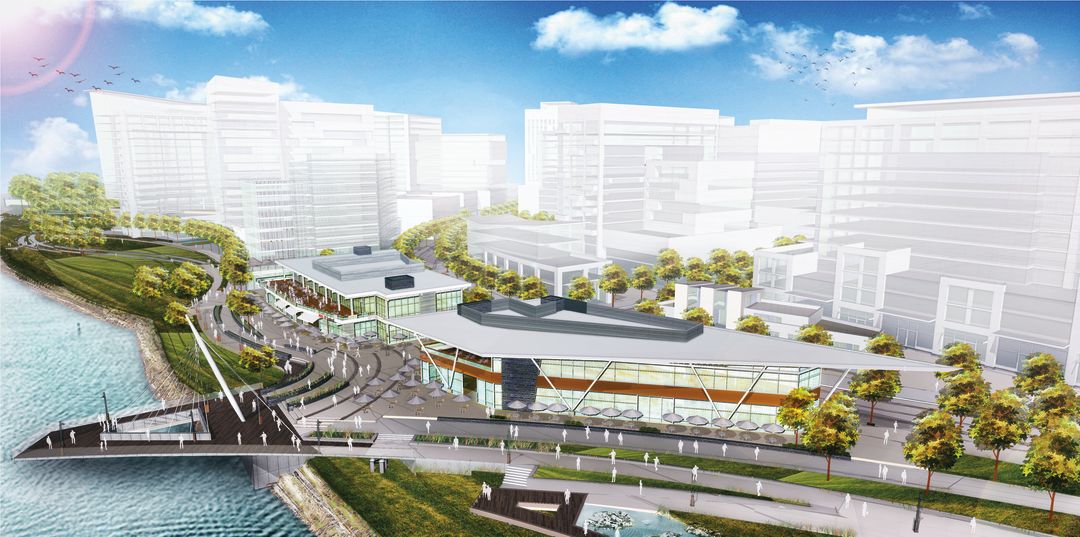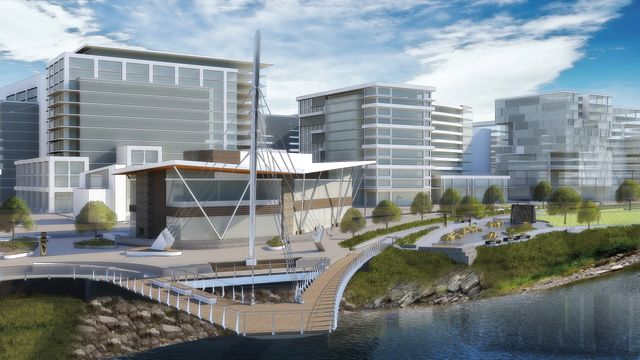How to Remake the Vancouver Waterfront

Renderings of Vancouver’s new waterfront park and retail district, a portion of which is already under construction
Image: Courtesy Gramor Development
Until recently, the northern bank of the Columbia River, just west of the I-5 bridge, served as an unofficial but definitive border between Portland and suburbia: a half-mile strip of brown grass, dirt, and industrial ruin, separated from Vancouver’s downtown by train tracks and concrete.
But by 2018, that waterfront—heretofore lowercase in spelling and allure—will transform into “The Waterfront,” home to a seven-acre riverside park, 3,300 homes, and 32 acres of retail, high-end restaurants, and a luxury hotel, anchored by a 90-foot cable-stay pier extending out over the river. The city’s core (the ’Couv core, perhaps?) will be just minutes away.
“What we’re doing here is a sign to the rest of the world that the old era of downtown Vancouver is over,” says Barry Cain, president of Gramor Development, which is spearheading the project. “People who live in Vancouver want to stay in Vancouver, and they want urban life just as much as people in the Portland area.”

Image: Courtesy Gramor Development
While the city’s median income and age haven’t shifted much since 2010, the $1.5 billion makeover will capitalize on a perceived cultural shift in Vancouver that seems to signal a hipper, more affluent future.
“Anecdotally, Vancouver seems like it is attracting a younger population, particularly in the downtown core,” says Vancouver’s community and economic development director, Chad Eiken. “There are more brewpubs, restaurants, and community events that appeal to a younger crowd than, say, four or five years ago, and young people are finding jobs in a fast-growing technology sector. There should be options for people of all ages and incomes.”
Constructed in three phases, the Waterfront will be the largest south-facing waterfront property in the Portland metro area. Planners say they are not trying to compete with Portland directly. But if successful, the area could leverage the Columbia in the same way Portland leveraged the Willamette River as it rejuvenated its deteriorating downtown in the 1970s, by refocusing the city’s epicenter on a vibrant, aesthetically pleasing riverside park.
“What’s happening in Vancouver is a lot bigger than most people might imagine,” says Cain. “A long time ago, Northwest 23rd was the big thing. Then the Pearl District was the big thing. I think we are going to find, for the next 10 to 20 years, the big thing is going to be right here.”




